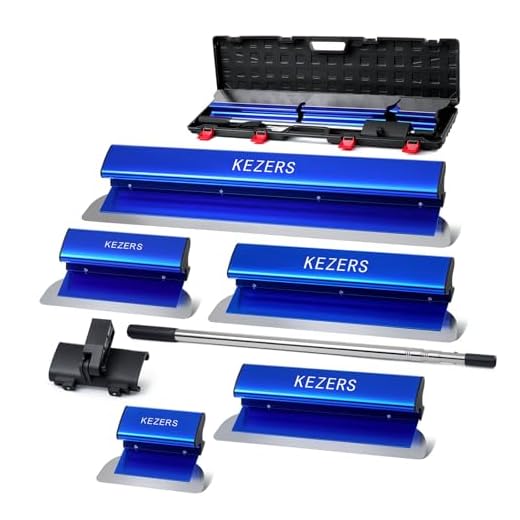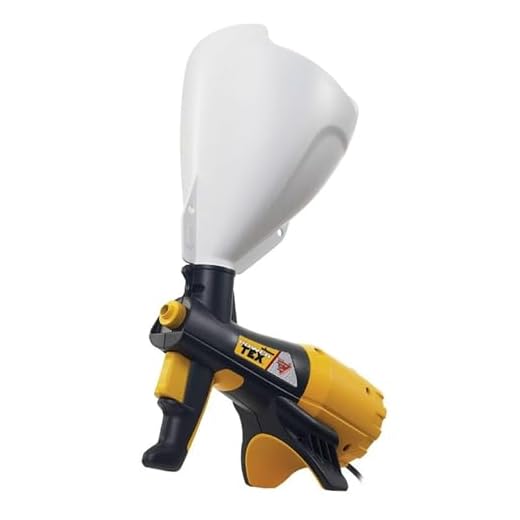




Painting is a great way to transform the look of your walls and add personality to your space. If you’re looking for a textured finish that adds depth and interest, skip trowel texture is a popular choice. This technique creates a subtle, rustic look that can work well in a variety of design styles.
To achieve a skip trowel texture, you’ll need to start with a smooth, primed wall surface. This technique involves applying a thinned down layer of joint compound to the wall and skimming over it with a trowel to create a random pattern of subtle texture. The resulting finish resembles the texture of skip-troweled plaster walls, hence the name.
Before you begin, make sure you have all the necessary materials on hand. This includes joint compound, a trowel, a paintbrush or roller, and your chosen paint colour. It’s a good idea to practice the technique on a small area or scrap piece of drywall before tackling your entire wall.
Once you’re ready, start by applying a thin layer of joint compound to the wall using a trowel. Hold the trowel at a slight angle and apply the compound in a random pattern, making sure to smooth it out as you go. Don’t worry about creating a perfectly smooth surface – the goal is to create subtle texture.
Step-by-Step Guide: How to Achieve Skip Trowel Texture
Creating a skip trowel texture on your walls can add depth and character to any room. This popular texture technique gives a subtle raised pattern that can hide imperfections and create a unique, decorative finish. With the right tools and techniques, you can achieve skip trowel texture in just a few simple steps. Follow this guide to get started.
Materials You’ll Need:
- Patching compound
- Joint compound
- Hawk or mud pan
- Taping knife or trowel
- Medium-grit sandpaper
- Paint and primer
- Paint roller
Step 1: Prepare the Walls
Start by preparing the walls for the skip trowel texture. Fill in any holes or cracks with patching compound and let it dry according to the manufacturer’s instructions. Sand any rough areas with medium-grit sandpaper to create a smooth surface.
Step 2: Mix the Joint Compound
Next, mix the joint compound in a hawk or mud pan according to the package instructions. The consistency should be similar to thick pancake batter.
Step 3: Apply the Joint Compound
Using a taping knife or trowel, apply a thin layer of the joint compound to the wall. Hold the trowel at a 30-degree angle and use a skip and slide motion to create texture. You can vary the size and direction of your skips to achieve the desired look.
Step 4: Let the Texture Dry
Allow the texture to dry completely, usually overnight or as recommended by the manufacturer. Avoid touching or disturbing the texture while it dries.
Step 5: Sand the Texture
Once the texture is dry, use medium-grit sandpaper to lightly sand the surface. This will smooth out any rough spots and create a more uniform finish.
Step 6: Prime the Walls
Before painting, apply a coat of primer to the textured walls. This will help the paint adhere properly and ensure an even finish.
Step 7: Paint the Walls
Finally, use a paint roller to apply your chosen paint color to the walls. Apply multiple thin coats, allowing each coat to dry before applying the next. This will ensure a rich, even color.
And there you have it – a beautifully textured skip trowel finish on your walls! With a little patience and practice, you can achieve professional-looking results and transform any space.
Prepare the Surface
Before you begin applying skip trowel texture to your walls, it’s important to properly prepare the surface. This will ensure that the texture adheres well and creates a smooth and even finish.
Clean the Surface
Start by cleaning the walls to remove any dirt, dust, or grime. Use a damp cloth or sponge to wipe down the surface and ensure it’s free from any debris.
Repair Any Damage
Inspect the walls for any cracks, holes, or other damage. Use a spackling compound or patching plaster to fill in any imperfections. Allow the compound to dry completely, and then sand the patched areas until they are smooth and level with the rest of the wall.
Prime the Surface
Applying a coat of primer to the walls will create a uniform base and help the skip trowel texture adhere better. Use a roller or brush to apply a coat of primer, ensuring complete coverage. Allow the primer to dry according to the manufacturer’s instructions.
Protect Surfaces
Before starting the texture application, take the time to protect any surfaces you don’t want to get texture on. Cover floors, furniture, and other items with drop cloths or plastic sheets to prevent any accidental spills or splatters.
By properly preparing the surface before applying skip trowel texture, you’ll ensure the best results and a professional-looking finish.
Mix the Texture Compound
To create the skip trowel texture, you will need to mix a texture compound. Before starting, ensure that you have gathered all the necessary materials:
- Texture compound
- Water
- Large bucket
- Electric drill with a mixing attachment
- Measuring cup
- Plastic sheet or drop cloth
- Mixing stick or trowel
Follow these steps to mix the texture compound:
- Read the manufacturer’s instructions on the texture compound packaging for the appropriate mixing ratio.
- Place the large bucket on the plastic sheet or drop cloth to protect the floor or surface.
- Pour the required amount of texture compound into the bucket.
- Add the recommended amount of water into the bucket.
- Attach the mixing attachment to the electric drill.
- Insert the mixing attachment into the bucket with the texture compound and water.
- Turn on the drill at a slow speed and begin mixing the compound and water together. Make sure to scrape the sides and bottom of the bucket to ensure thorough mixing.
- Continue mixing until the texture compound has a smooth and creamy consistency. Avoid overmixing, as it can introduce air bubbles into the mixture.
- Once the texture compound is properly mixed, let it sit for a few minutes to allow any remaining air bubbles to rise to the surface.
Now that the texture compound is mixed, you are ready to apply it to the desired surface using the skip trowel technique.
Apply the Texture
Before applying the skip trowel texture, make sure the surface is clean and smooth. Remove any dirt, debris, or loose paint by scraping and sanding the walls.
Once the surface is prepped, mix the skip trowel texture compound according to the manufacturer’s instructions. Use a mixing paddle attached to a drill to ensure the compound is well-mixed and free of lumps.
Starting from a corner of the room, use a trowel or a drywall knife to apply the texture compound onto the wall. Hold the trowel at a slight angle and apply the compound in random patterns. Use a light touch to create a textured surface with depth and variation.
Work in small sections at a time, about 4 to 5 square feet, to prevent the compound from drying out before you can finish it. Continue applying the texture compound to the entire wall, working your way across and down.
Once the texture is applied, allow it to dry according to the manufacturer’s instructions. This typically takes about 24 hours. During this time, avoid touching or disturbing the wall to ensure a smooth and even finish.
After the texture has dried, you can prime and paint the wall as desired. Use a roller or brush to apply the primer and paint, working in even strokes to maintain the texture and pattern created by the skip trowel technique.
Remember to clean your tools after you’re finished to prolong their lifespan and ensure they’re ready for future projects. Enjoy your newly textured and painted walls!
Finessing and Finishing Touches
Once you have applied the skip trowel texture to your walls and it has dried, it’s time to add those final touches to really make the texture shine. Here are some tips and techniques to help you finesse the finish:
Touch Up Any Imperfections
First, carefully inspect the textured walls for any imperfections such as bumps or ridges. Use a putty knife or sandpaper to smooth out these areas, being careful not to remove too much texture. This step will ensure that your walls have a perfectly even and smooth appearance.
Prime and Paint
Before you apply paint, it’s important to prime the textured walls. Primer will create a smooth and uniform surface, allowing the paint to adhere properly and enhance the texture. Once the primer is dry, you can proceed to apply your desired paint color. Consider using a paint sprayer or roller with a thick nap for best results.
When painting skip trowel texture, it’s important to keep in mind the direction and consistency of your strokes. Make sure to maintain a consistent pressure and angle while applying the paint. This will help enhance the depth and beauty of the texture, giving it a more professional and polished appearance.
Highlighting and Detailing
If desired, you can further enhance the skip trowel texture by adding some highlighting or detailing. This can be done by using a different color paint or glaze and applying it to certain areas of the texture. For example, you can use a small brush or sponge to dab on a lighter or darker shade of paint to create depth and dimension. Experiment with different techniques to achieve the desired effect.
Additionally, you can consider adding a protective sealant or topcoat to further protect and enhance the skip trowel texture. This can give the walls an extra sheen and provide long-lasting durability.
Clean and Polish
After you have completed the painting process, take the time to clean and polish the textured walls. Use a mild soap and water solution to remove any dust or dirt that may have accumulated during the painting process. Once the walls are clean, you can use a soft cloth to gently buff the surface, bringing out the texture’s full potential.
By following these finessing and finishing touches, you can achieve a professional-looking skip trowel texture that adds depth and character to your walls. Take your time, experiment with different techniques, and enjoy the process of creating a unique and textured look for your space.






